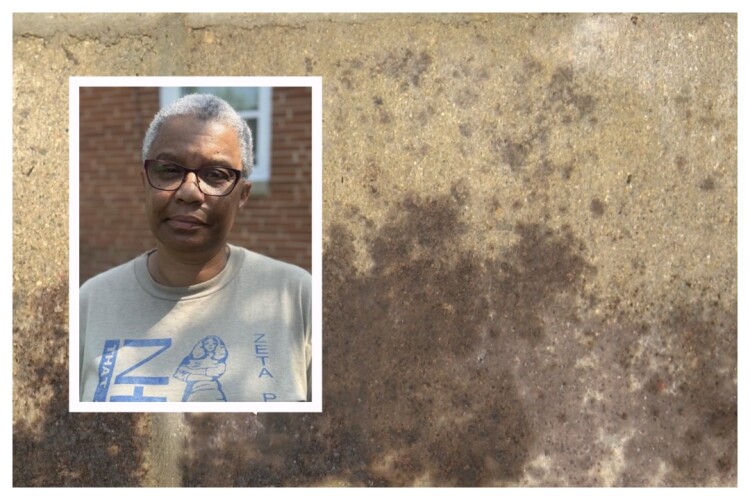MILWAUKEE — Milwaukee residents are working against time to prevent mold growth in their homes after historic flooding devastated basements across the city. For many families like Ophelia Carr's, the emotional toll compounds as they face new health concerns while still cleaning up.
"Where do you start? You cry, I cried, I panicked, had an anxiety attack," Carr said.
The flood destroyed treasured family belongings stored in her basement.
"My entire basement, all our belongings, everything that we have treasured gone," Carr said.
Days after the floodwaters receded, residents across Milwaukee neighborhoods are discovering a new threat emerging on their walls: mold. TMJ4 is hearing from multiple families who are concerned about how quickly mold is appearing in their water-damaged homes.
Watch: Milwaukee residents battle mold concerns in aftermath of historic flooding
"We can see it in our basement on our walls already. It started to grow. That's why we're trying to work as fast as possible because one of my grandkids that lives upstairs has an allergy, so we're trying to get everything out so it doesn't affect her, put her in the hospital," Carr said.
Milwaukee Health Commissioner Mike Totoraitis confirms these concerns are valid, especially for vulnerable populations.
"We're very concerned about mold developing in people's homes, especially for folks who have underlying respiratory conditions like COPD or asthma or might be immune compromised," Totoraitis said.
The good news, according to health officials, is that residents can take specific steps to address mold before it becomes a serious health hazard. Understanding the process of mold remediation is crucial for affected homeowners.
"The easy way to manage mold is to first ensure that you're taking out the soiled and wet, damp material and get that out of your basement as quickly as possible," Totoraitis said.
Health experts recommend a three-step process: First, remove water-damaged items that cannot be cleaned. Second, thoroughly wash salvageable items with warm water and bleach. Finally, dry out the affected space as quickly as possible using fans and dehumidifiers.
For visible mold that has already appeared, Totoraitis recommends a specific cleaning solution.
"If you do see mold start to develop, you'd use a bleach solution, so one cup of bleach to one gallon of water to wipe down the surfaces and disinfect that space," Totoraitis said.
While the appearance of mold can be stressful for flood victims already dealing with significant loss, health officials emphasize that following these steps can effectively manage the problem and protect family health.
The Milwaukee Health Department provided these additional tips for mold mitigation:
If you must remain in a home with mold, take these precautions:
- Limit time indoors: Stay with friends or family when possible until cleanup is complete. Spend more time outdoors or in public spaces such as libraries or malls.
- Seal off affected areas: Use plastic tarps to isolate moldy rooms until they are cleaned.
- Prevent spread: Remove shoes before leaving moldy areas. Change clothes, if possible, to avoid tracking and carrying mold spores through the home.
- Create a clean sleeping space: Choose the least affected room, seal it off, and keep it mold-free. Shower and change into clean clothes before entering.
- Use ventilation carefully: Do not use a whole-house HVAC system until it has been inspected, as it can spread mold. If safe, open windows for fresh air and use exhaust fans in kitchens and bathrooms. Position fans in a window, blowing to the outside, in order to prevent the spreading of mold in the Avoid aiming portable fans directly at mold.
- Clean or dispose of contaminated items: Wash and dry bedding, towels, clothing, and other washable items. Items that cannot be cleaned should be discarded or sealed until they can be safely treated.
Additional safety tips for mold cleanup:
- Who should not clean mold: People with mold allergies, weakened immune systems, underlying lung disease, asthma, or COPD should not take part in cleanup.
- Wear protective gear: Use a NIOSH-approved N95 respirator or better, protective gloves (non-latex, vinyl, nitrile, or rubber), and goggles without vent holes. Wear clothing that fully covers your skin.
- Use cleaning products safely: Open windows and doors for ventilation. Never mix bleach with ammonia or other cleaners. Use no more than 1 cup of bleach per 1 gallon of water for cleaning hard surfaces or use dish detergent as an alternative.
- Avoid direct contact: Do not handle moldy materials with bare hands.
It’s about time to watch on your time. Stream local news and weather 24/7 by searching for “TMJ4” on your device.
Available for download on Roku, Apple TV, Amazon Fire TV, and more.





